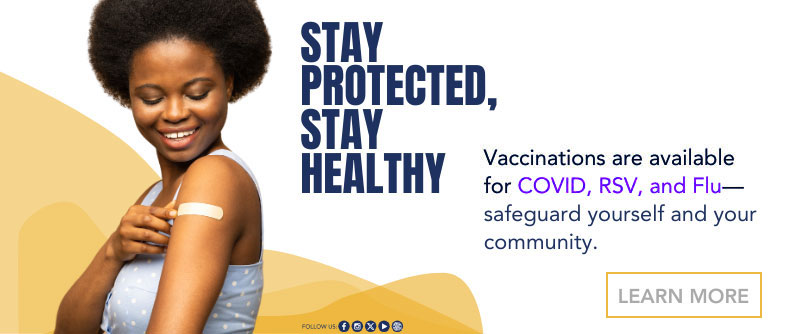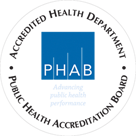How much food and water should I store?
When preparing to shelter in your home store enough food and water for at least 2 weeks. Include a three-day supply of food and water in your Go Bag if you have to evacuate your home.
Disaster Supplies & Preparedness Calendar will assist you in assembling your emergency kit over a six-month period. Print the calendar and purchase the suggested items in small increments within your normal weekly shopping.
Food
Can food be rationed if supplies run low?
If activity is reduced, healthy people can survive on half their usual food intake for an extended period and without any food for many days. Food, unlike water, may be rationed safely, except for children and pregnant women.
What kind of food should be stocked for an emergency?
Try to include foods that your family will enjoy and that are also high in calories and nutrition. Foods that require no refrigeration, preparation or cooking, such as dried or canned foods, are best. Individuals with special diets and allergies, babies, toddlers, elderly people and nursing mothers may need special foods. Canned dietetic foods, juices and soups may be helpful for ill or elderly people.
Make sure you have a manual can opener and disposable utensils as well as non-perishable foods for your pets.
Typical foods include:
- Canned meat, such as tuna and spam, and vegetable soups
- Canned fruits, fruit juices and vegetables
- Ready-to-eat cereals and uncooked instant cereals
- Peanut butter
- Jelly
- Hard candy and canned nuts
- Powdered milk
- Dried fruit
- Dry, crisp crackers
- Commercially packed air-dried or freeze-dried foods
- Baby food and formula
- Long lasting vegetables, such as turnips, potatoes, carrots, apples, squash, etc.
How should emergency food supplies be stored?
- Keep food in the driest and coolest spot in the house — not above 70° F and not below freezing.
- Open food boxes or cans carefully so that you can close them tightly after each use.
- Wrap cookies and crackers in plastic bags and keep them in air tight containers.
- Empty opened packages of sugar, dried fruits and nuts into screw-top jars or air-tight cans to protect them from pests.
- Inspect all food containers for signs of spoilage before use.
- To protect boxed foods from pests and extend their shelf life, store the boxes in tightly closed cans or metal containers.
- Rotate your food supply. Use foods before they go bad and replace them with fresh supplies. Place new items at the back of the storage area and older ones in front.
How much food should I store?
Even though it is unlikely that an emergency would cut off your food supply for two weeks, you should prepare a supply that will last that long. A two-week supply can relieve a great deal of inconvenience and uncertainty until services are restored.
The easiest way to develop a two-week stockpile is to increase the amount of basic foods you normally keep in your home. Remember to compensate for the amount you eat from other sources (such as restaurants) during an average two-week period. Rotate your supply once or twice a year to keep it fresh.
Should I store food for my pets?
Yes. Non-perishable food for your pets should be stored. Include adequate water per day, according to the size of your pet.
Visit the Pets and Disasters webpage for more information.
How do I rotate my stored food?
Here are some general guidelines for rotating common emergency foods:
Use within six months:
- Powdered milk (boxed)
- Dried fruit (in metal container)
- Dry, crisp crackers (in metal container)
- Potatoes
Use within one year:
- Canned condensed meat and vegetable soups
- Canned fruits, fruit juices and vegetables
- Ready-to-eat cereals and uncooked instant cereals (in metal containers)
- Jelly
Hard candy, chocolate bars and the list below, may be stored indefinitely (in proper containers and conditions):
- Wheat
- Vegetable oils
- Corn
- Baking powder
- Soybeans
- Instant coffee, tea
- Vitamin C
- Cocoa
- Salt
- Noncarbonated soft drinks
- White rice
- Dry pasta
- Powdered milk (in nitrogen-packed cans)
How do I cook food if the power goes out?
For emergency cooking you can use a fireplace, or a charcoal grill or camp stove outdoors only. You can also heat food with candle warmers, chafing dishes and fondue pots. Canned food can be eaten right out of the can. If you heat food in its can, be sure to open the can and remove the label first.
Water
How much water should I store?
Water is your most important supply during an emergency. One gallon per person, per day for drinking, food preparation and hygiene should be stored with your emergency supplies. For example, 56 gallons of water should be stored for a family of four for two weeks.
A normally active person needs to drink at least two quarts of water each day. Children, nursing mothers and ill people will need even more. The amount of water a person needs will depend upon age, physical condition, activity, diet and climate.
Can water be rationed if supplies are low?
Never ration water. If supplies run low, drink the amount you need today and try to find more for tomorrow. You can minimize the amount of water your body needs by reducing activity and staying cool.
Try to avoid foods that are high in fat and protein, and don't stock salty foods, since they make you thirsty. Try to eat salt-free crackers, whole grain cereals and canned foods with high liquid content.
Does our hot climate mean I should store more water?
A normally active person needs to drink at least two quarts of water each day; however, hot environments can double the amount of water required. Reduce your activity and stay as cool as possible to minimize the amount of water needed to stay hydrated.
What is the best way to store water?
If possible, purchase bottled water and keep it sealed until ready to use. You can also store water in thoroughly washed plastic, glass, fiberglass or enamel-lined metal containers. Never use a container that has held toxic substances.
Plastic containers, such as soft drink bottles, are best. You can also purchase food-grade plastic buckets or drums. Seal water containers tightly, label them and store in a cool, dark place. Rotate water based on expiration dates on bottles or every six months.
What can I do to improve the taste of stored or boiled water?
Stored or boiled water will taste better if you put oxygen back into it by pouring it back and forth between two containers.
What if we run out of water?
There are hidden sources of water in your home. You can use the water in your hot-water tank, pipes, and ice cubes. As a last resort, you can use water in the reservoir tank of your toilet (not the bowl).
How to use water in your pipes: Shut water off to your house. Let air into the plumbing by turning on the faucet in your house at the highest level. A small amount of water will trickle out. Then obtain water from a faucet located at the lowest point in the house.
How to use hot-water tank water: Be sure the electricity or gas is off before draining the hot-water tank. Open the drain at the bottom of the tank. Start the water flowing by turning off the water intake valve and turning on a hot-water faucet. Do not turn on the gas or electricity when the tank is empty.
Be sure to purify water from outside natural sources before drinking it. Avoid water with floating material, an odor or dark color. You should not drink floodwater.
When should the water into the home be shut off?
If you hear reports of broken water lines or sewage leaks turn off the incoming water valve to prevent contaminating the water in your pipes and hot-water tank.
When does water need to be purified?
Water of uncertain purity should be purified before using it for drinking, food preparation or hygiene. Contaminated water can contain micro-organisms that cause diseases such as dysentery, cholera, typhoid and hepatitis.
How do I purify water?
There are several ways to purify water and none of them are perfect. The best solution is to use a combination of purifying methods. Before purifying, let any suspended particles settle to the bottom, or strain them through layers of paper towels or clean cloth.
Boiling - Boiling is the safest method of purifying water. Bring water to a rolling boil for one minute. Some water will evaporate. Let water cool before drinking. (Boiling water will kill most microbes but will not remove other contaminants such as heavy metals, salts and most other chemicals.)
Disinfection - Chlorine water purifying tablets or household liquid bleach will kill most microorganisms. Use only regular household liquid bleach that contains 5.25 percent sodium hypochlorite. Do not use scented bleaches, color-safe bleaches or bleaches with added cleaners. (Add 16 drops of bleach per gallon of water, stir and let stand for 30 minutes. If the water does not have a slight bleach odor, repeat the dosage and let stand another 15 minutes.)
Should I store vitamins and other nutritional supplements?
In a crisis, it will be vital that you maintain your strength. Including vitamin, mineral and protein supplements in your stockpile will help assure adequate nutrition.
Medicines: Ask your doctor to furnish prescriptions for a longer time span, if possible. In addition, have on hand common remedies such as ibuprofen or Tylenol.
Other tips for maintaining your strength include:
- Eat at least one well-balanced meal each day.
- Drink enough liquid to enable your body to function properly (two quarts a day)
- Take in enough calories to enable you to do any necessary work.

